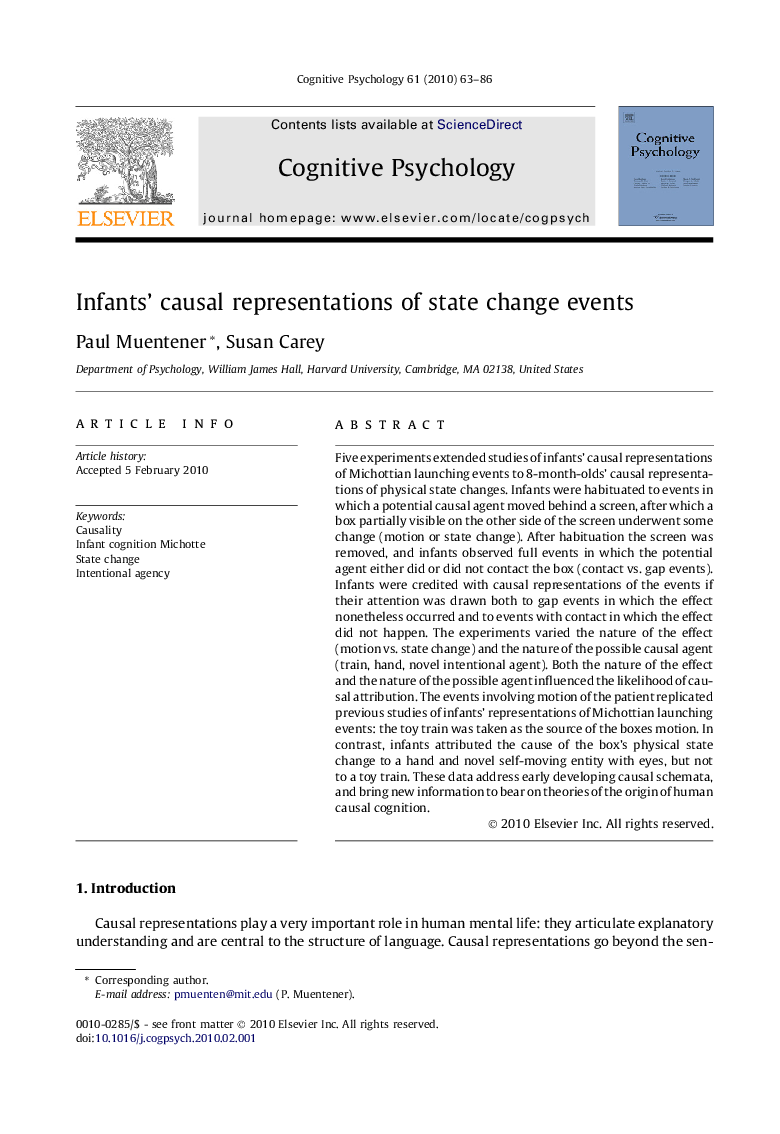| Article ID | Journal | Published Year | Pages | File Type |
|---|---|---|---|---|
| 916979 | Cognitive Psychology | 2010 | 24 Pages |
Five experiments extended studies of infants’ causal representations of Michottian launching events to 8-month-olds’ causal representations of physical state changes. Infants were habituated to events in which a potential causal agent moved behind a screen, after which a box partially visible on the other side of the screen underwent some change (motion or state change). After habituation the screen was removed, and infants observed full events in which the potential agent either did or did not contact the box (contact vs. gap events). Infants were credited with causal representations of the events if their attention was drawn both to gap events in which the effect nonetheless occurred and to events with contact in which the effect did not happen. The experiments varied the nature of the effect (motion vs. state change) and the nature of the possible causal agent (train, hand, novel intentional agent). Both the nature of the effect and the nature of the possible agent influenced the likelihood of causal attribution. The events involving motion of the patient replicated previous studies of infants’ representations of Michottian launching events: the toy train was taken as the source of the boxes motion. In contrast, infants attributed the cause of the box’s physical state change to a hand and novel self-moving entity with eyes, but not to a toy train. These data address early developing causal schemata, and bring new information to bear on theories of the origin of human causal cognition.
